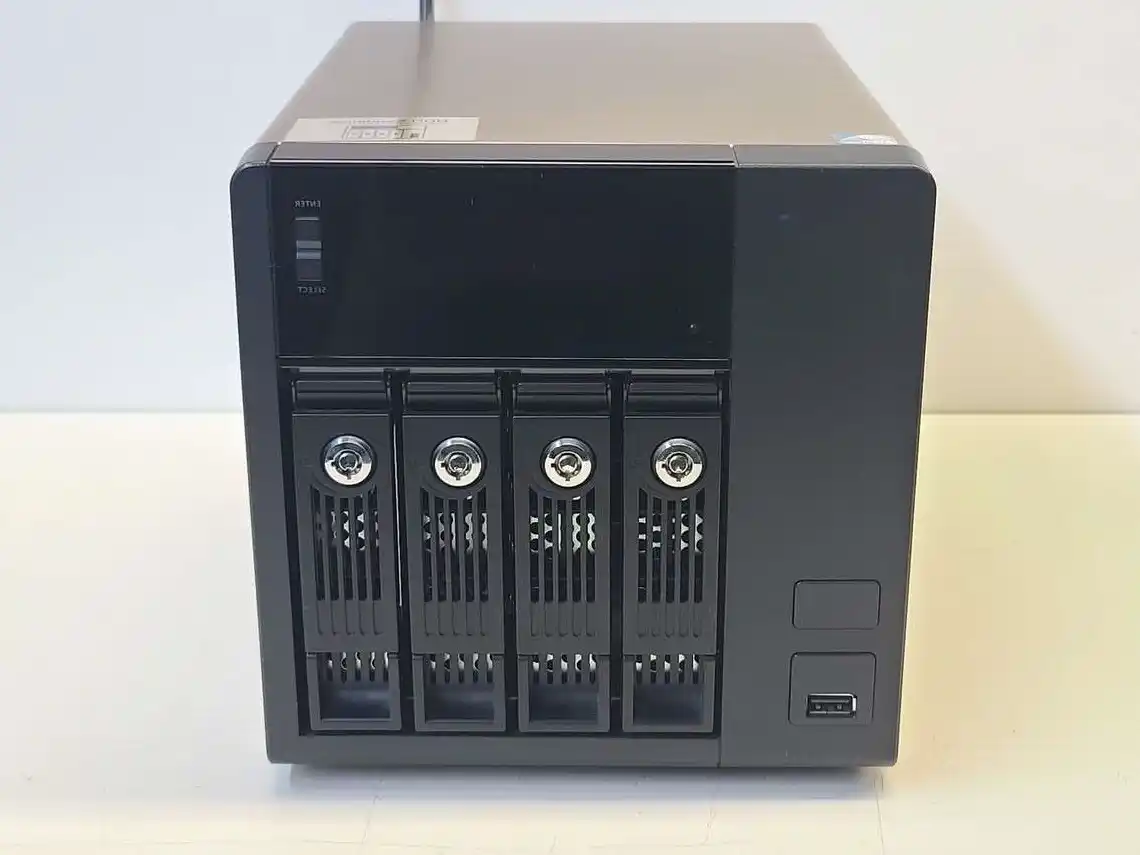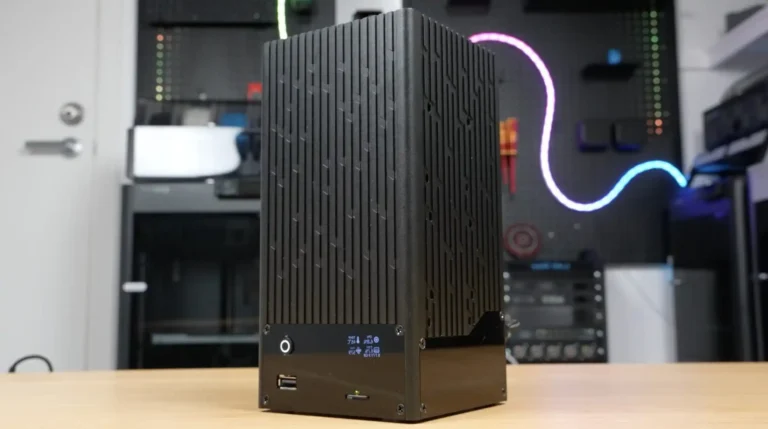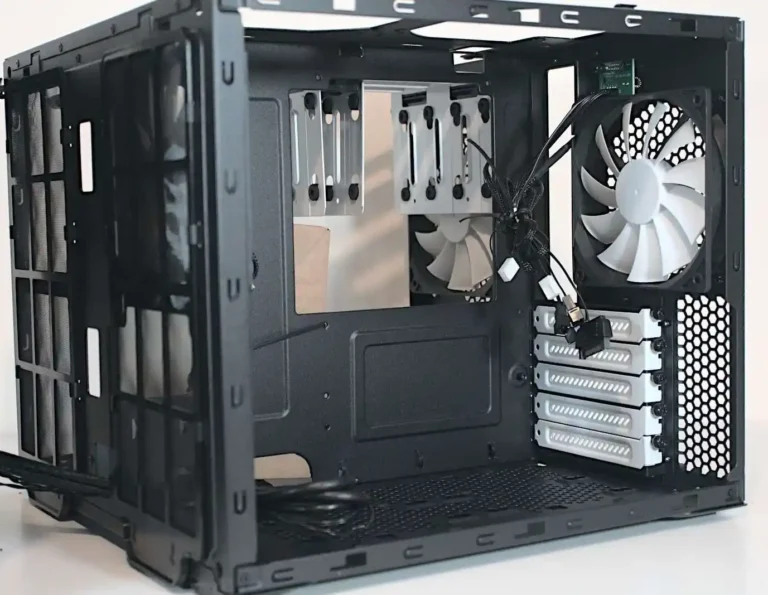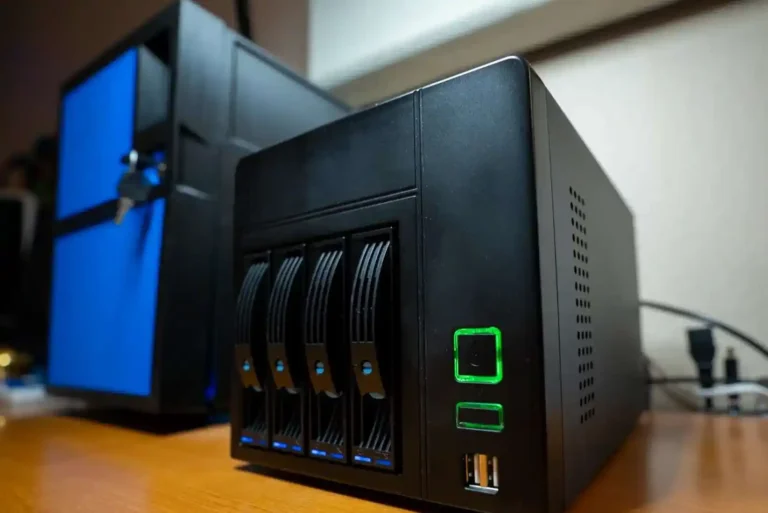Sie kennen diese kleinen blauen Bildschirme auf der Vorderseite eines NAS. Verdienen sie einen Platz in Ihrer Materialliste, oder sehen sie einfach nur gut aus? Lassen Sie uns Klartext reden. Ich erkläre Ihnen, was die LCD-/Statusanzeige wirklich leistet, wann sie Ihnen den Hintern rettet und wann Sie Ihr Budget anderweitig einsetzen sollten. Nebenbei zeige ich Ihnen, wie das für echte Käufer von IStoneCase - OEM/ODM-Teams, MSPs, Rechenzentrumsbetreiber und Heimwerker - passt.
TL;DR: LCD/Statusanzeigen helfen, wenn man sie braucht Informationen vor Ort und aus erster Hand und netzunabhängige Fehlerbehebung. Wenn Sie eine ausgereifte Überwachung und Out-of-Band haben, sinkt der Wert.
NAS-LCD-Statusanzeige: Was es anzeigt und warum es wichtig ist
Die LCD-Anzeige an der Vorderseite ist einfach: Sie zeigt den Namen der Box, die IP-Adresse, Warnungen, Temperaturen und den Festplattenstatus an und ermöglicht manchmal das Ausführen grundlegender Aktionen. Es ist klein, aber es spricht, wenn andere Tools schweigen.
LCD-Anzeige auf der Vorderseite: IP-Adresse, Warnungen, Schnellaktionen
Häufig anzutreffende Gegenstände:
- Hostname und eine oder mehrere IPs
- Laufwerksausfälle, Lüfterfehler, Übertemperatur, PSU-Warnungen
- Grundlegende Tasten für sicheres Herunterfahren/Neustarten, vielleicht ein schneller Netzwerk-Reset
- Eine kurze Protokollmeldung oder ein Code, damit Ihr Techniker vor Ort nicht raten muss
Das ist nicht “schick”. Es ist praktisch. Man geht hin, man liest, man handelt.
Lokale Fehlersuche ohne Netzwerk (OOB-lite)
Wenn VPN nicht funktioniert, der Switch nicht funktioniert oder Ihr Remote-KVM nicht funktioniert, funktioniert das LCD wie ein Last-Mile-Status-Fenster. Es ersetzt nicht die vollständige OOB/IPMI, aber es reduziert die MTTR, weil Sie das Offensichtliche an Ort und Stelle bestätigen: Ist die Schachtel lebendig? Weint eine Festplatte? Hat sich die IP geändert? Sie müssen keinen Laptop booten, um das zu wissen.
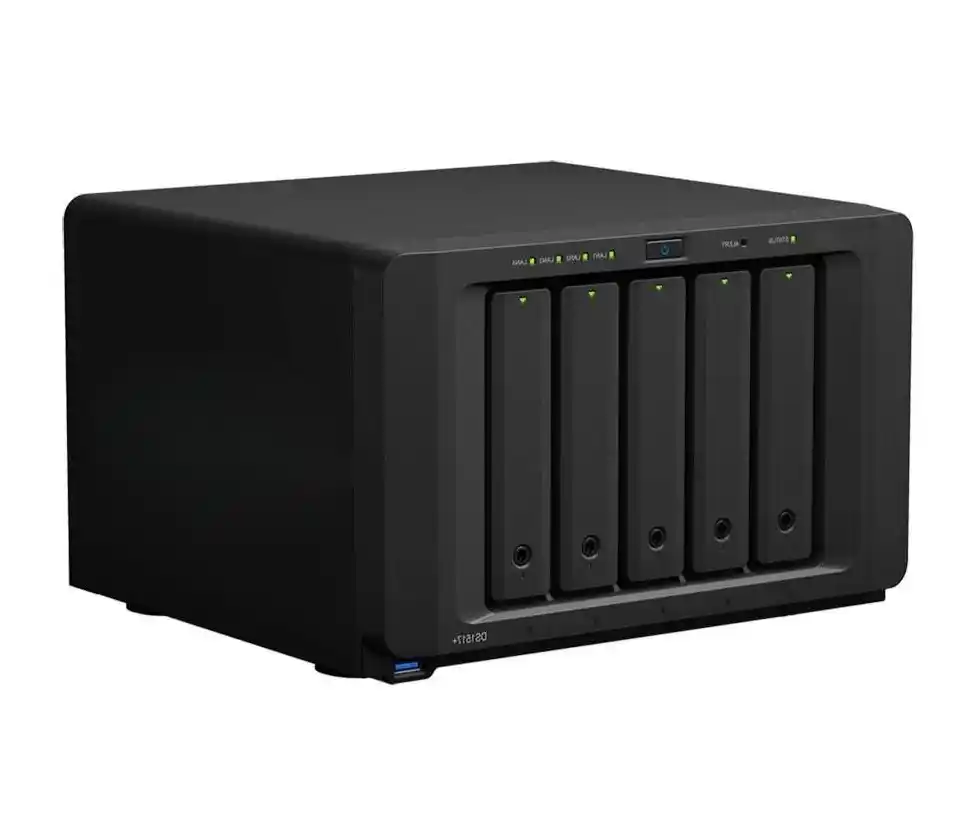
Kernargumente (mit eindeutigen Beweisen aus der Praxis)
| Argument | Was dies in der Praxis bedeutet | Typische Verwendung |
|---|---|---|
| Sofortige, lokale Sichtbarkeit | Lesen Sie IP, Alarme und Temperaturen, ohne sich anzumelden. | Regale mit strenger Änderungskontrolle, dunkle Standorte. |
| Funktioniert, wenn das Netzwerk nicht funktioniert | Bei WAN-Problemen werden immer noch Fehlercodes angezeigt. | Randgebiete, Lager-IDFs, Einzelhandelsgeschäfte. |
| Schnellere Geräte-ID | Beschriften Sie das genaue Chassis in einer Metallwand. | Multi-Rack-Räume, Erweiterungsschränke. |
| Geringe Informationsdichte | 2×16 oder kleine OLED begrenzt Text und Menüs. | Tiefe Triage braucht noch UI/Terminal. |
| Verringert “Welche Box?”-Fehler | Gerätename und Feldkarte in Augenhöhe. | Nachtschichten, laute DC-Etagen. |
| Extra Stückliste & Fehlerstelle | Mehr Teile = mehr potenzielle RMAs. | Großserien-OEMs wägen zwischen Preis und Leistung ab. |
Kein Hype, nur allgemeine betriebliche Probleme.
Kaufen/Skip-Matrix für NAS-LCD/Statusanzeige
| Ihre Umgebung | Kaufen Sie es | Überspringen | Warum |
|---|---|---|---|
| Kein IPMI/KVM, gelegentliche Reparaturen vor Ort | ✔ Kaufen | Lokaler Bildschirm verkürzt die Triage, weniger Rätselraten. | |
| Ausgereifte Überwachung + Push-Benachrichtigungen + OOB | ✔ Überspringen | Sie sehen bereits alles in Dashboards. | |
| Edge-Standort mit fehlerhaftem WAN | ✔ Kaufen | “Die ”begehbare Sicht" spart Lkw-Rollen. | |
| Homelab/SOHO, Einzelverpackung | Vielleicht | ✔ Oft | Ein "Nice-to-have", aber kein "Must-have" bei knappem Budget. |
| Multi-Rack / Erweiterungsfächer | ✔ Kaufen | ID & Status auf der Vorderseite reduziert Fehlbedienungen. |
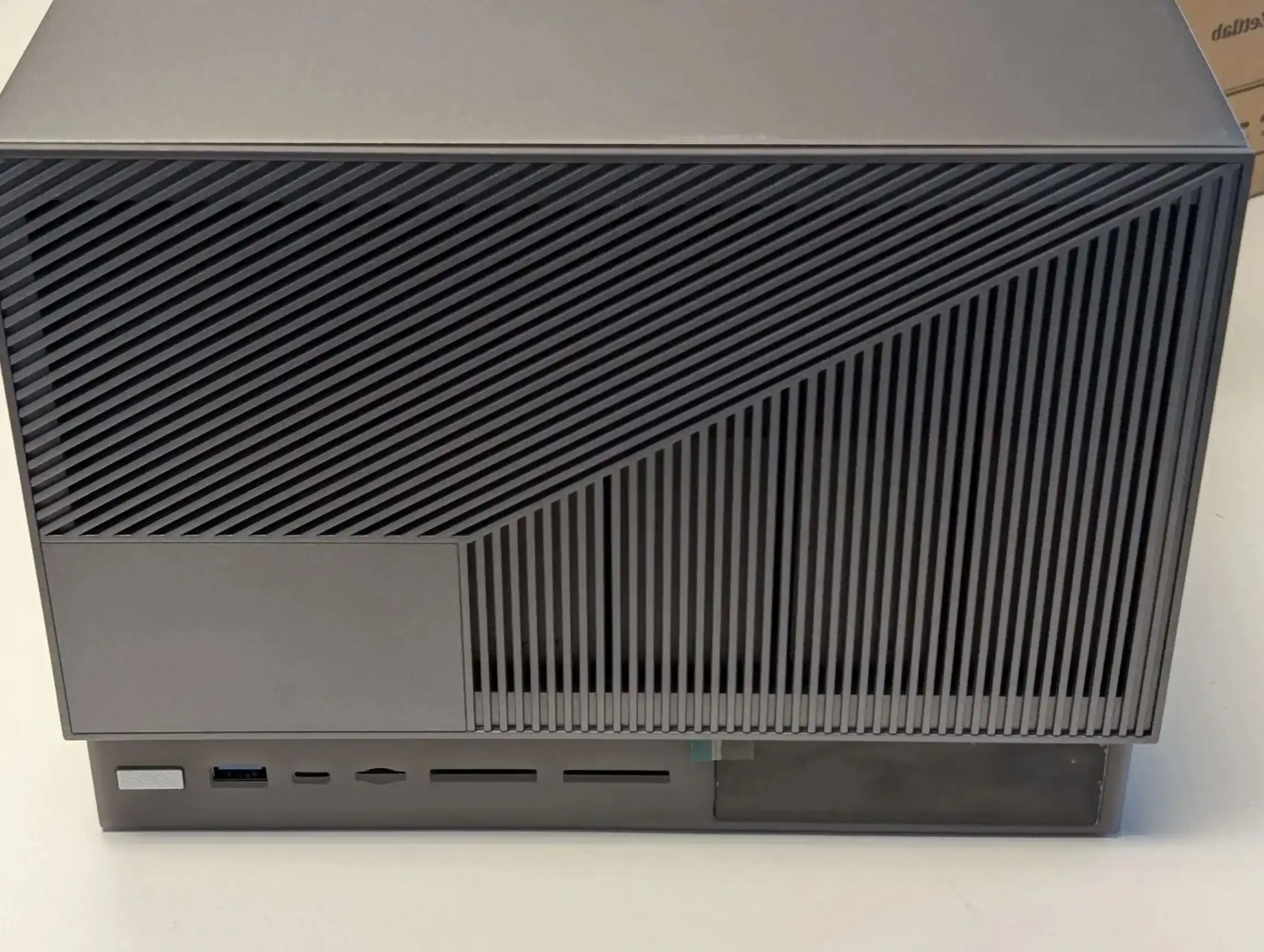
Real-World-Szenarien (Ops-first, wallet-aware)
Randstandort mit instabilem WAN
Sie verwalten kleine POPs und Hinterzimmer im Einzelhandel. Das DSL bricht zusammen, und Ihre Remote-Sitzung wird abgebrochen. Der Techniker vor Ort liest die LCD-Anzeige: “Link down” und ein Laufwerk ist ausgefallen. Sie bringen ein Kabel wieder an und kennzeichnen die defekte Festplatte. Sie halten die SLA ein, keine langen Eskalationen. Nicht schön, aber es funktioniert.
Multi-Rack-Raum: Schnelle Geräteidentifikation
Es gibt ein Meer von fast identischen Gehäusen. Auf dem LCD-Display werden der Name des Knotens und eine Schachtanzeige angezeigt. Ihr Ingenieur findet die Einheit in Sekunden, nicht in Minuten. Weniger Oops-Momente, weniger False-Box-Neustarts. Geringere MTTR, höheres Vertrauen.
Homelab / SOHO mit guter Überwachung
Sie haben ein einzelnes NAS, Grafana, Telegram-Benachrichtigungen. Das LCD sieht cool aus, klar. Aber wenn Sie Ihr Geld ausgeben wollen, investieren Sie es lieber in Festplatten, Lüfter oder Schienen. Sie werden das Upgrade täglich spüren, den Bildschirm nur manchmal.
Praktische Alternativen und Add-Ons
- Out-of-Band-Verwaltung (IPMI / KVM über IP): Volle Konsole, Stromkontrolle, BIOS-Zugriff. Kostet mehr, aber es ist echtes OOB.
- E-Ink oder kleiner externer Bildschirm: Zeigen Sie ein größeres, individuelles Armaturenbrett an der Vordertür. Geringe Leistung, lesbar.
- Gute Beschriftung + Schilder auf der Vorderseite: Manchmal ist der richtige Aufkleber besser als jedes kleine LCD.
- Alarmierende Disziplin: E-Mail, Webhooks, Chatbots. Wenn Ihre Alarmierung laut ist, wird ein LCD das nicht ändern.
Beschaffungshinweise für OEM/ODM-Einkäufer (IStoneCase-Perspektive)
Wenn Sie einen Lauf mit IStoneCase spezifizieren, ist hier die Checkliste, die wir Produktmanager verwenden sehen:
- UI-Design: Bestimmen Sie die genauen Felder: Hostname, IPv4/IPv6, Temperatur, Lüfterdrehzahl, letzter kritischer Alarm. Halten Sie die Menüs oberflächlich.
- Stecker & Kabelweg: Verlegen Sie die Route so, dass Quetschstellen mit Frontlüftern vermieden werden. Planen Sie Serviceschleifen für schnelle RMA.
- Firmware-Haken: Stellen Sie eine einfache Status-API/einen Dämon bereit, damit Ihr Betriebssystem-Image den Status "gesund" oder "fehlerhaft" melden kann.
- Wartungsfreundlichkeit: Schneller Tausch, kein komplettes Zerlegen der Front. Wenn das Panel stirbt, sollten die Einsatzkräfte nicht die gesamte Blende verlieren.
- Ausfallsicheres Verhalten: Wenn das Betriebssystem ausgefallen ist, aber der Strom eingeschaltet ist, zeigen Sie trotzdem einen Heartbeat oder Fehlercode an.
- Lokalisierung: Mehrsprachige Strings oder Icon-Forward UI für globale Implementierungen.
IStoneCase baut OEM/ODM-Servergehäuse und NAS-Geräte im Maßstab. Wenn Sie das LCD benötigen, integrieren wir es sauber. Wenn Sie es nicht benötigen, liefern wir das gleiche Gehäuse ohne es, um die Dinge schlank zu halten. In beiden Fällen erhalten Sie die gleiche strukturelle Qualität und Luftstromabstimmung.
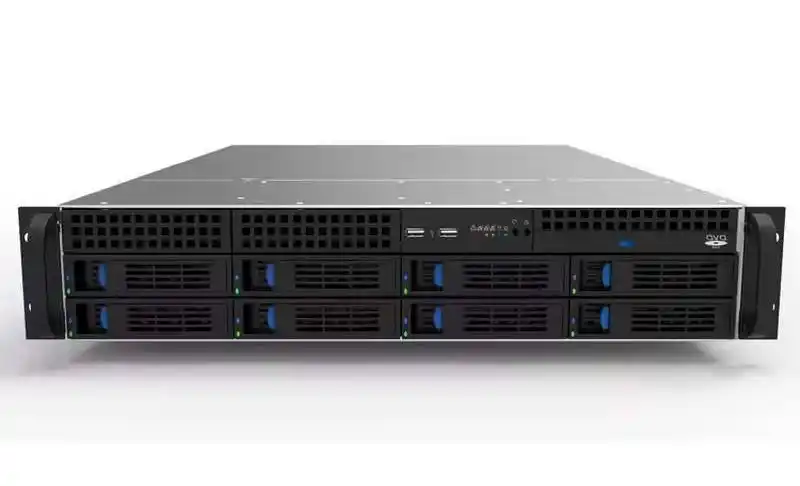
Wo das NAS-LCD neben der Wahl des Gehäuses hinpasst
Selbst wenn Sie sich für einen LCD-Bildschirm entscheiden, übernimmt das Gehäuse die Hauptarbeit: Thermik, Akustik, Wartungsfreundlichkeit, Kabeldisziplin. Binden Sie die Funktion an den richtigen Formfaktor:
- Sie wollen eine server rack pc gehäuse für dichte Installationen und Standardschienen.
- Bevorzugen Sie turmartige Fußabdrücke? Eine saubere Server-PC-Gehäuse mit Fronteinlass hat Platz für das Statuspanel und gute Kabelführungen.
- Für kompakte Bauten, eine robuste Computergehäuse Server Das Layout sorgt dafür, dass der LCD-Bildschirm erreichbar ist, ohne den Luftstrom zu behindern.
- ATX-Karten? Verbinden Sie den Bildschirm mit einem atx-Server-Gehäuse das geeignete PSU-Abdeckungen und Hot-Swap-Schächte unterstützt.
- Wenn Sie gemischte Rechen- und Speicherkapazitäten nutzen, sollten Sie eine GPU-Server-Gehäuse und achten Sie auf den LCD-Bandweg um große Beschleuniger.
- Kleine Fußabdrücke? Eine ITX-Gehäuse profitiert immer noch von einer winzigen OLED-Anzeige für IP und Warnmeldungen.
- Reihen bauen? Vergessen Sie nicht Fahrgestellführungsschiene Kits, damit die Frontplatte lesbar bleibt, wenn Sie die Geräte herausziehen.
- Für reine Speicherzeilen, siehe NAS-Geräte die Statusanzeigen OOTB unterstützen.
Das Playbook für Einkäufer: Einfache, ehrliche Fragen
Fragen Sie diese, bevor Sie Ihre Spezifikationen festlegen:
- Wer steht vor dem Regal? Wenn die Antwort “fast niemand” lautet, sinkt der Wert des LCD.
- Was ist unsere OOB-Geschichte? Wenn IPMI/KVM Standard ist, wird das Panel zum Nice-to-have.
- Wie laut sind unsere Warnungen? Wenn Sie zu laut sind, werden Sie sowohl das LCD als auch die E-Mails ignorieren. Bringen Sie zuerst die Alarmhygiene in Ordnung.
- Wie viele identische Kisten in einem Raum? Mehr Zwillinge = mehr Wert durch sichtbare Namen und Fehlercodes.
- Brauchen wir schnelle Maßnahmen? Wenn ja, halten Sie das LCD-Menü einfach. Weniger Klicks, weniger Fehler.

